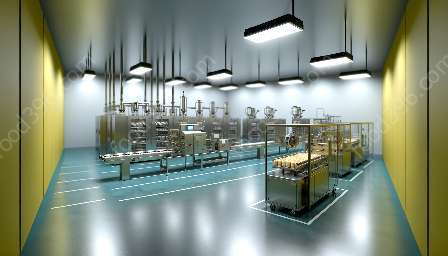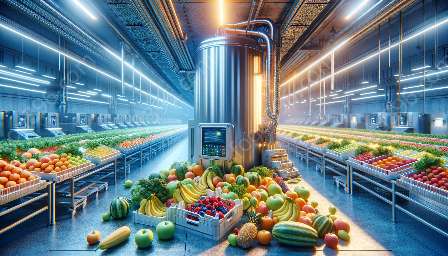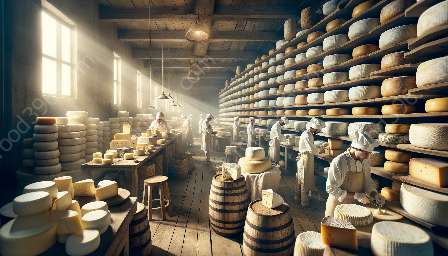Drying food is an ancient and effective method of preserving and processing food. It involves removing the moisture from food items to extend their shelf life while retaining their nutritional value and flavors. This natural technique has been used for centuries by different cultures around the world and continues to be an essential part of food preservation and processing. In this comprehensive guide, we'll delve into the art of drying, its techniques, benefits, and its compatibility with food preservation and processing.
The Importance of Drying in Food Preservation and Processing
Drying is one of the oldest methods of preserving food and has been used by various civilizations for thousands of years. This traditional technique helps prevent the growth of microorganisms and spoilage, which are common issues in fresh food. By removing moisture from food, drying inhibits the growth of bacteria, mold, and yeast, preserving the food for an extended period.
Furthermore, drying enables food to be stored and transported more easily, making it an essential step in food processing and distribution. This method significantly reduces the weight and volume of food, making it more convenient for storage and transportation, especially in regions with limited resources and harsh climates.
Techniques of Drying Food
There are various techniques for drying food, each with its unique advantages and requirements. The most common methods include sun drying, air drying, freeze-drying, and dehydration using specialized equipment. Sun drying involves exposing food items to the sun's heat and airflow, while air drying utilizes natural air circulation to remove moisture.
Freeze-drying, on the other hand, involves freezing the food and then subjecting it to a vacuum environment, allowing the ice to evaporate directly. Dehydration using equipment such as food dehydrators or ovens involves using controlled heat and airflow to remove moisture from the food. Each method has its specific applications, and the choice of technique depends on factors such as the type of food, available resources, and desired shelf life.
The Benefits of Drying Food
Drying food offers numerous benefits that contribute to both food preservation and processing. First and foremost, dried foods have a significantly extended shelf life compared to their fresh counterparts. This makes them suitable for long-term storage, especially in emergency situations or in regions with limited access to fresh produce.
Moreover, drying helps retain the nutritional value of food by preserving essential nutrients such as vitamins, minerals, and fiber. While the dehydration process removes water, it does not significantly impact the nutritional content of the food, making dried foods a valuable source of nutrients, particularly in situations where fresh produce is scarce.
Additionally, drying enhances the flavor and intensity of certain food items, such as fruits, herbs, and spices. The concentrated flavors of dried foods can be a valuable addition to culinary creations, adding depth and complexity to dishes and beverages. Dried fruits, for example, can impart natural sweetness and texture to a wide range of recipes, from baked goods to savory dishes.
Drying in Food and Drink Manufacturing
The art of drying extends to the manufacturing of food and drink products, where it plays a crucial role in producing a wide variety of items. In the food industry, drying is used to produce ingredients such as dried fruits, vegetables, herbs, and spices, which are then used in the manufacturing of sauces, soups, snacks, and other products.
Furthermore, the preservation of beverages, such as tea leaves and coffee beans, heavily relies on drying techniques to extend their shelf life and maintain their flavors. Dried ingredients are also used in the production of flavorings, extracts, and seasonings, contributing to the diverse array of food and drink products available in the market.
Expert Tips and Considerations
When drying food at home or in a commercial setting, it's important to follow best practices to ensure safety, quality, and optimal results. Proper sanitation, temperature control, and adequate ventilation are essential to prevent contamination and spoilage during the drying process.
For home enthusiasts, investing in a food dehydrator or utilizing an oven for dehydration can be a convenient and cost-effective way to dry a variety of foods. Considerations such as food preparation, slicing techniques, and the selection of ripe, fresh produce can significantly impact the outcome of the drying process.
In commercial settings, strict adherence to food safety regulations, quality control measures, and efficient drying equipment is crucial to maintain the integrity and safety of the dried products. Additionally, exploring innovative drying technologies and sustainable practices can enhance the efficiency and environmental impact of large-scale drying operations.
Conclusion
Drying is a fundamental method of food preservation and processing that continues to be relevant in today's culinary landscape. Its compatibility with food preservation and processing makes it a valuable asset in ensuring the availability of nutritious and flavorful food and drink products. By exploring the art of drying and understanding its techniques, benefits, and applications, individuals and businesses can harness the power of this traditional method to enhance the diversity and availability of food and drink options.


















